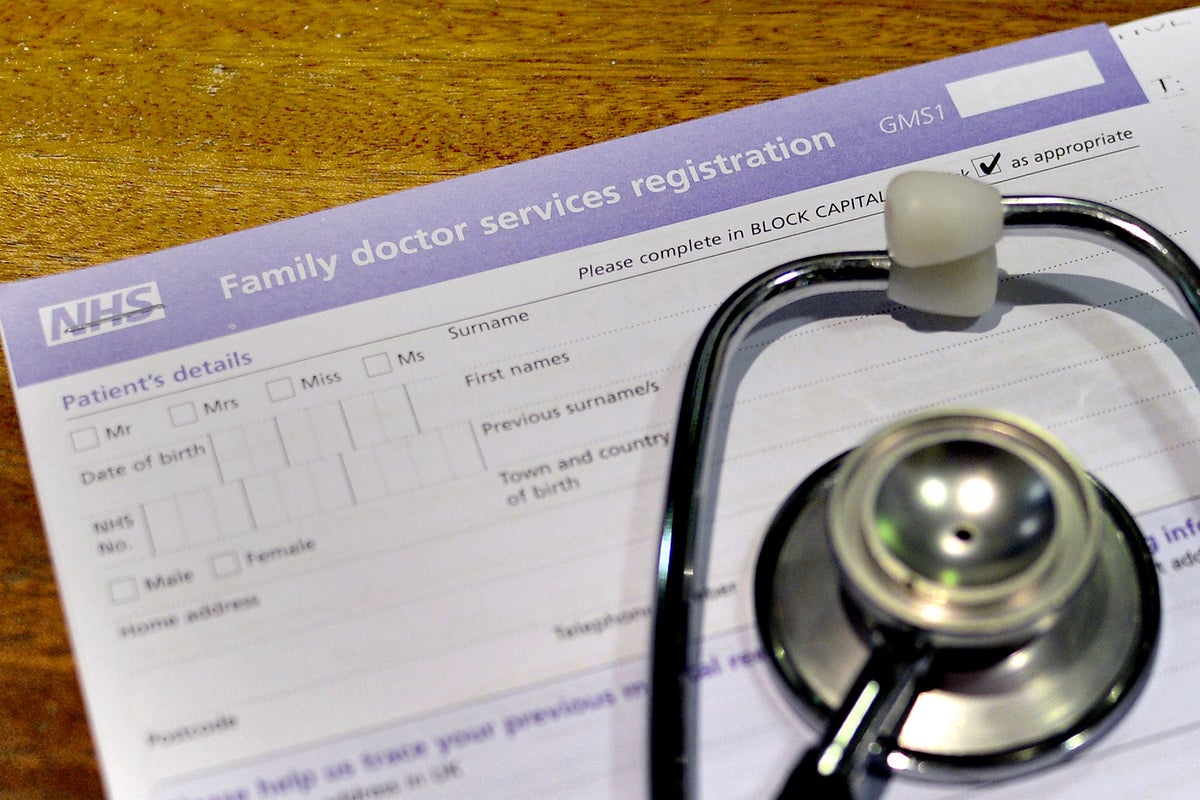
Health leaders need to focus on retaining family doctors, experts have warned, after new data showed the number of permanent GPs in England has dropped year on year for the eighth month in a row.
There were 26,629 permanent qualified GPs working in England in January, down 1.3% from 26,985 in January 2022, NHS Digital said.
It follows a 1.3% drop in December.
The figures are the latest to suggest the start of a possible trend, though more data is needed to confirm whether the numbers are on a clear downwards path.
GP workforce statistics can fluctuate month to month, which is why year-on-year comparisons are a more reliable measure of long-term change.
Beccy Baird, senior policy fellow at the King’s Fund, told the PA news agency the ongoing drop showed the rising number of GPs in training year on year was not translating into fully-qualified permanent staff.
She added: “We can see from the data that even though we are training more GPs than ever before, the number is not going up as fast as we need it to.
“We are seeing full-time GPs leaving the profession and retiring, so we are not focusing enough on retention. But, equally, we are seeing people reducing hours because the workload is so enormous.
“That’s in the context of the [Government’s] manifesto promise to increase the number [of GPs] by 6,000. But they are either staying the same or going down.
“That’s in the context of increasing demand – you can see in the activity data demand is going up, they are doing more activity than ever before and we know a lot of that activity is more complex.
“We need to pay much more attention to retention, what will it take to keep GPs working, and I think there’s a range of things there we need to look at.
“They need access to more of the things that keep people happy at work, for example people want to feel part of a well-functioning team. They want time to do their job the way they are trained to do it, so time with patients.
“We know they need access to ongoing development and training, and a sense of progression. At the moment, it feels we are a bit stuck on a treadmill and no-one has the headspace to do any of this work.”
The latest figures also show the proportion of GPs in England working full time at local surgeries continues to be at its lowest level since current records began nearly eight years ago.
It’s high time the Government recognised the pressures facing general practice and the impact this is having on both patients and the general practice workforce, and acted to address them— Professor Kamila Hawthorne, Royal College of GPs
Fewer than one in four (23%) qualified permanent GPs worked at least 37.5 hours a week in January this year while nearly seven in 10 (69%) worked between 15 and 37.5 hours.
In January last year, 24% of qualified permanent GPs worked full time, with 68% working between 15 and 37.5 hours a week
The earliest data shows 33% of permanent GPs were working full time in September 2015.
All statistics are based on the number of full-time equivalent posts in the GP workforce and do not include trainees or locums.
Meanwhile, separate NHS Digital data also published on Thursday showed GPs carried out 29.4 million appointments in January, 69% of which were face to face and 45% on the day they were booked.
Professor Kamila Hawthorne, chair of the Royal College of GPs, said the figures showed what a tough winter it had been in general practice, with members reporting they continue to face “intense workload and workforce pressures”.
“Almost 30 million patient consultations were delivered by GPs and our teams in January, 16% more than the same month in 2019, with more than 45% of these on the same day they were booked,” she added.
“GPs and our teams are going above and beyond to ensure patients receive timely and appropriate care, but they are doing so with 843 fewer fully-qualified, full-time equivalent GPs than in 2019 – a figure that continues to fall.
“Month on month the data tells the same story. This isn’t sustainable, it’s leading to access and safety issues for patients, and it’s causing GPs to burn out and leave the profession earlier than they planned to.
“It’s high time the Government recognised the pressures facing general practice and the impact this is having on both patients and the general practice workforce, and acted to address them.”
The college is calling on the Government to draw up a recruitment-and-retention strategy that goes beyond the target of 6,000 GPs pledged in its election manifesto, and for steps to cut bureaucracy so that GPs can spend more time with their patients.







